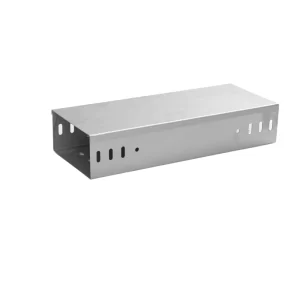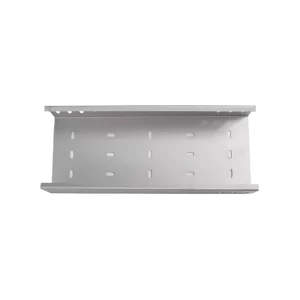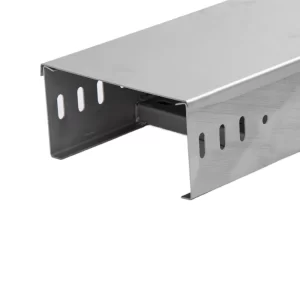Cable ducting and cable trunking are two distinct methods of cable management used in electrical installations to organize, protect, and route cables and wires efficiently. While both serve similar purposes, there are fundamental differences in their design, application, and installation methods. Understanding these differences is crucial when planning an electrical infrastructure to ensure optimal cable protection and system performance. Let’s delve into the specifics of each:

Cable Ducting
Definition: Cable ducting refers to a system of conduits or channels, typically made of plastic or metal, installed within walls, floors, or ceilings to contain and guide cables and wires. These ducts can be either solid-walled pipes or open-channel systems, and they are often embedded within the building structure during construction.
Characteristics:
Flexibility: Cable ducts can be straight or bent to follow building contours and are adaptable to different installation layouts.
Accessibility: Once installed, accessing cables within ducts can be challenging and typically requires cutting into the duct or using access points pre-installed during the initial setup.
Installation: Cable ducting is often installed during the construction phase, concealed within walls or beneath floors, requiring precise planning to anticipate future cable needs.
Protection: Ducts provide physical protection to cables from mechanical damage and environmental factors, but access for maintenance or additions can be limited.

Cable Trunking
Definition: Cable trunking, also known as cable raceways, refers to an open or semi-enclosed channel system used to support and manage cables primarily in visible installations. It is typically surface-mounted onto walls or suspended from ceilings, offering a more accessible solution for cable management.
Characteristics:
Accessibility: Cable trunking allows for easy access to cables for inspection, maintenance, or adding new cables, as they are usually not concealed within building structures.
Versatility: Available in various sizes, shapes (e.g., L-shaped, U-shaped), and materials (such as PVC, metal), trunking can be tailored to suit different aesthetic and functional requirements.
Installation:Trunking is simpler to install post-construction, making it a flexible solution for retrofits or when cable routes need to be altered.
Aesthetics: Trunking can be designed to blend with interior decor, with options for paintable or decorative covers to enhance visual appeal.
Protection: While offering protection against dust and minor impacts, trunking may not provide the same level of physical security as embedded ducting, especially in harsh environments.

Key Differences
1. Installation Location: Cable ducting is typically embedded within building structures, while trunking is surface-mounted or suspended, making it more visible and accessible.
2. Accessibility for Maintenance: Cable trunking offers easier access for cable additions or repairs compared to cable ducting, which may require more intrusive interventions.
3. Design Flexibility: Trunking systems are more adaptable to changes and offer greater flexibility in terms of layout modifications post-installation.
4. Aesthetics and Environment: Trunking can be designed to complement interior aesthetics, while ducting is hidden from sight but less flexible in design customization.
5. Protection Level: Ducting provides a higher degree of protection, especially from external elements, since it is embedded, while trunking focuses more on accessibility and versatility.
Ultimately, the choice between cable ducting and trunking depends on the specific requirements of the installation, including the building’s architecture, cable management needs, future expansion plans, and the desired level of accessibility versus concealment. It’s crucial to consult with professional electricians or engineers to ensure the chosen solution aligns with electrical codes, safety standards, and the overall design objectives of the project.

